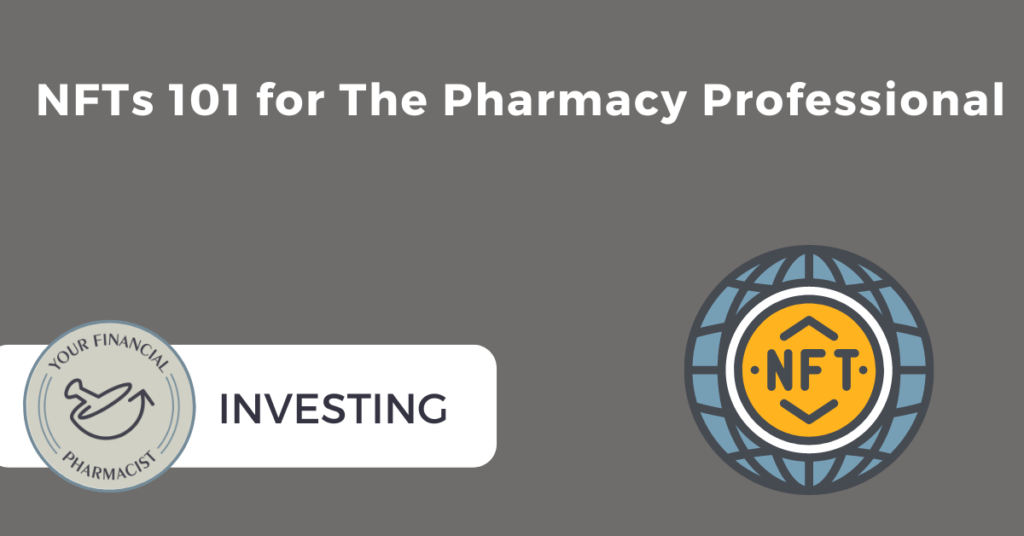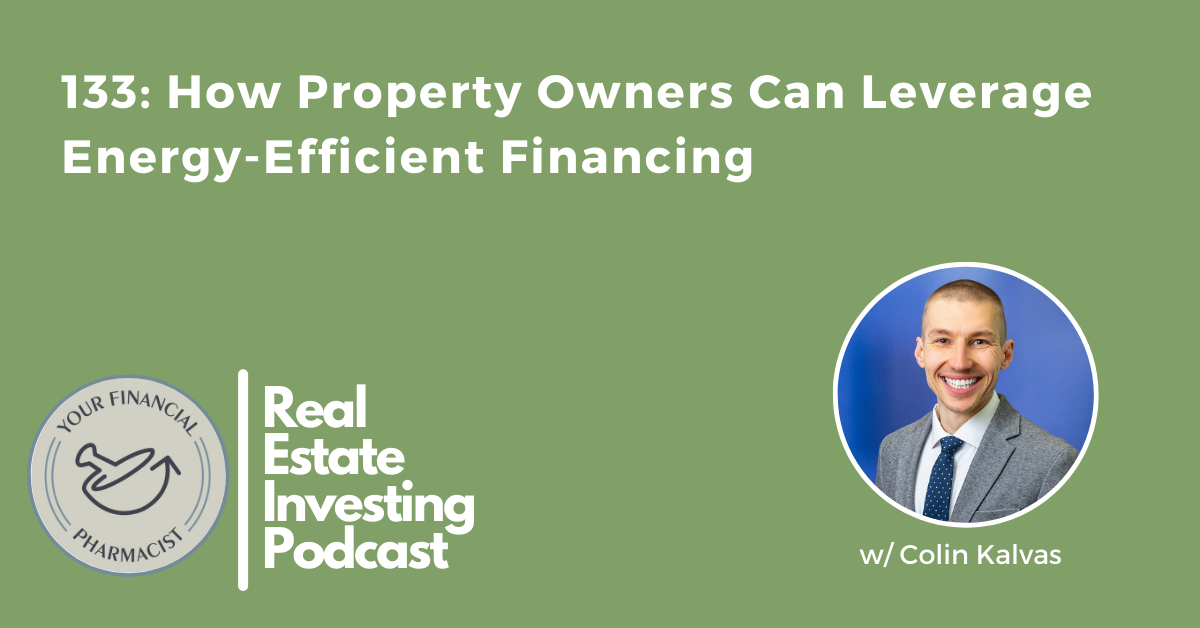NFTs 101 for the Pharmacy Professional
The following is a guest post from Samantha Boartfield, PharmD. Samantha Boartfield is a pharmacist in Phoenix, Arizona, who also writes for women and mother entrepreneurs (Mamapreneurs) on her site at SamanthaBrandon.com.
Disclaimer: This post is intended for general, educational purposes only. This post and the information herein are in no way meant to serve or act as a replacement for professional investment advice. Investing in cryptocurrency or NFTs may be high-risk with high losses and should be done at the investor’s sole risk.
If you’re scanning your newsfeed in the morning, I’m willing to bet you’ve seen NFTs making their headlines more often than ever these days. Watching people pay millions of dollars for an NFT and high-profilers like Marc Cuban endorsing them had me scratching my head until I finally took the time to understand the basics.
Because really. What exactly is an NFT?
This is a question that is being asked more and more in the pharmacy community. With unprecedented student loan balances and financial futures to secure, many of us may be wondering if we should be jumping into the digital world of cryptocurrencies or NFTs. It seems like all healthcare professionals have been trialing at least one online side hustle or another to generate some extra income.
If you’re looking to gain foundational knowledge of the NFT space, this article is meant to provide a high-level overview. Now, let’s start with the basics.
What is an NFT?
To define an NFT, you have to have some basic understanding of blockchain and cryptocurrency, as NFTs are built on the blockchain and often paid for by cryptocurrencies.
Blockchain
Blockchain is, simply put, a public digital ledger. Everyone in the world has access to it. When a transaction is made, such as Person A sending cryptocurrency to Person B, the details of the transaction are packaged up into code, put in a digital “block,” and then added to the end of a blockchain. Because this is a public ledger, everyone in the world sees this purchase (so you can’t dispute it), and once a block is made, it cannot be altered (doing so would be caught by the other millions of users who would recognize the alteration).
I like to think of blockchain as a giant poster in a public square, where everyone writes their trades for everyone to see. When a transaction is done in front of the entire town, you can’t dispute it and say you didn’t receive or send the money. Now just digitize this experience and amplify it on a global scale.
Cryptocurrency
Cryptocurrencies are digital money that utilizes the blockchain to trade directly. You likely know the popular versions such as Bitcoin, Dogecoin, or Ether. Each currency has its own blockchain standard and is a decentralized method of exchange.
Another important note is that crypto is “fungible,” which means each coin is just as valuable as another coin. Think of this as the U.S. dollar; a $20 bill is just as valuable as another $20 bill.
If you would like a better foundation of this, I recommend reading Cryptocurrency 101 for the Pharmacy Professional first for a more in-depth review.
That leads us to an NFT, which stands for “Non-Fungible Token”.
These tokens are not interchangeable like bitcoin, but rather each token is unique or “non-fungible.” And that’s because each NFT is attached to the URL of a digital or physical asset.
So instead of just having the simple details of a crypto transaction (like the sender, receiver, and the amount), an NFT will include other details such as the URL of the product you are attaching. Therefore, each NFT acts as a unique identifier of a digital asset that is secured on the blockchain.
The Smart Contract
Now, I would be remiss if I didn’t fully explain how the NFT can be transferred and packaged into the blockchain, and that answer is simple: through the use of a smart contract. Essentially, a smart contract is a bit of code that is written to automatically execute a contract when certain conditions or terms are met.
In the case of NFTs, the contract will include the URL of the digital file, as well as any other details that should be included, such as the seller, buyer price, and any royalties that could be owed.
To summarize: A smart contract operates under certain conditions that when met, will automatically execute its contents (in our case selling/giving away coins).
I think I’m following you. Can you give me an example?
As a recap, an NFT is a way to transfer a digital or physical product from one person to another, with this transaction being done on the blockchain and often purchased or sold through cryptocurrencies.
Now, as I mentioned, you can attach virtually anything to NFTs. Digital art and collectibles have by far been the most popular. CryptoPunks is one of the most popular collectible NFTs. Bleeple, a very well-known digital artist, created a collage of 5,000 original artworks and is the most expensive NFT sold to one owner, just shy of $70 million. Major brands have also jumped into the scene, including Disney, Louis-Vuitton, and Coca-Cola.
And NFTs are not limited to artwork. Since you can attach anything (including physical products), they have been used for entertainment purposes such as Coachella tickets to selling the first home as an NFT in Florida.
So, if I purchase an NFT, that means I own whatever product is attached, correct?
Okay, this is where it can be a bit complicated. Just because you purchased an NFT does not mean you have full rights to the product.
Ownership does not equal copyright, and many people confuse this.
What you own depends on the contract terms of the NFT that you purchased, and each may have its own degree of what extent you can use it.
Here’s a relatable example: Let’s say you purchased a physical, collectible copy of Leonardo da Vinci’s Vitruvian Man. Does that mean you own the copyrights to Vitruvian Man? Can you make more copies of it and distribute it? Surely, if you have a physical copy that you purchased and a printer. So you have the capability to distribute it as you please?
We all know that the answer is, of course not. Just because you own a copy of Vitruvian Man, doesn’t mean you own the copyrights of the product.
So I don’t get a physical product. I don’t own the copyrights. What’s the point?
At this point, you may be wondering, what’s the point? I don’t have a physical copy to hang up. I don’t own the copyrights. What do I do with an NFT?
There are many ways to enjoy an NFT. First, you can display your NFT digitally in many ways including social media accounts or digital frames. Like any other collectible, you can hang on to it as an ‘investment’ and resell it later.
The better question yet is, what is the appeal of an NFT?
The biggest appeal to artists going the NFT route comes down to one word: Royalties.
If you’re an artist wanting to sell a photograph or artwork you have two options. You can go the traditional route and sell that printed photograph to the highest bidder. Or, you can turn your photograph into an NFT and attach royalties. This means that every time the artwork is resold in the secondary market, the artist can receive a royalty that they have predetermined (typically anywhere from 5-10%).
As you can imagine, this is very appealing to artists, as typically subsequent sales tend to be much higher than initial sales.
How Do You Buy, Sell, and Trade NFTs?
One of the biggest obstacles to making NFTs mainstream is that there is quite the learning curve, particularly when it comes to buying and selling them.
To purchase or buy NFTs, you will need a few things:
1. Cryptocurrency
NFTs are almost always bought and sold using cryptocurrency. The majority of NFTs are made on the Ethereum blockchain, so you will need to purchase some Ether via a crypto exchange such as Coinbase or Gemini. Solana is another blockchain that has been rising in popularity for NFTs.
2. NFT Wallet
Next, you’ll need an NFT wallet that’s capable of trading NFTs. From one of these, you’ll be able to sell and receive your NFT, as well as view your assets. You don’t actually store your NFTs in this wallet, because remember, your NFT is stored on the blockchain with access to a URL for your product.
There are two types of wallets: “hot” or software wallets, and “cold” or hardware wallets. Software wallets, such as MetaMask or Trust Wallet, are popular ways to trade NFTs. However, because they’re connected to the internet it leaves them susceptible to hacks. Therefore, it’s recommended that you always backup your NFTs with a hardware wallet, which is not connected online and will protect them from hacks.
3. NFT Marketplace
This is where you will buy and trade NFTs (think of this as eBay or Etsy). Some are more exclusive, where they individually curate the NFTs that they present on their marketplace. Others are open-access marketplaces where anyone can buy and sell on the platform. Some popular NFT marketplaces are Opensea or Nifty Gateway.
Other companies have also created their own marketplaces such as NBA Topshots, which sells NBA NFTs exclusively. Veve Marketplace has also partnered with Disney to release its Golden Moments collection.
What Are Some of the Potentials of NFTs?
NFTs are such a new field that only time will tell if this is going to be the future of the way transactions are done or if it’s a short-lived concept. Here are some reasons that NFT technology may be here to stay:
1. Cuts Out the Middle Man
NFTs are stored on a blockchain, which means that there is no need for a third party such as Paypal to facilitate the transaction. This also eliminates fees that come with using a third party (but replaced with blockchain fees).
2. Transactions Without Borders
Since NFTs are stored on a blockchain, they can be traded with anyone in the world as long as they have cryptocurrency. This makes international transactions much easier than traditional methods, which involve wire transfers and banks.
3. Royalties for Artists
As we mentioned before, NFTs have the potential to revolutionize the way artists are paid for their work. By attaching royalties to their NFTs, artists can receive a percentage of every sale made in the secondary market.
This could create a whole new stream of income for artists and help support them financially.
4. The Metaverse & Gaming
The Metaverse is a term used to describe the virtual world that has been up and coming. NFTs are being used in the Metaverse as a way to represent ownership of virtual property and assets. As we see the Metaverse expanding, NFTs will likely have a role.
Play-to-earn gaming is another gaming industry that’s on the rise. It’s a model where gamers can earn rewards by playing video games. NFTs are being introduced into P2E gaming as a way to reward gamers for their achievements.
5. Brand Expansion
Luxury brands are taking notice, and have jumped into NFTs to increase their brand marketing strategies. Also, it’s an easy way for them to generate sales as the costs to create are very low, with a high marginal profit percentage.
What Are Some of the Downfalls of NFTs?
1. Hacks and Security Concerns
Even with an immutable blockchain, scams and hacks are still rampant. Hackers may not be able to change the code on your NFT, but they certainly can attempt to empty your NFT wallet and run with your assets. And because there’s no central authority, if this occurs, then there’s not much you can do. It’s important you store anything valuable on a hardware wallet to prevent this from happening.
Also, how do you know the NFT you are purchasing is legitimate? It’s similar to buying a fake designer bag, you need to know what to look for when you’re purchasing to protect yourself from getting scammed.
2. High Transaction Fees
Another potential downside of NFTs is that transaction fees can be high. Whenever you make a transaction that has to be added to the blockchain, there is a fee for doing so. This fee is also not standardized and fluctuates hourly depending on how many users are on the network.
3. Regulations, Regulations, Regulations
The world of NFTs is still largely unregulated. Governments have only just begun to take notice and it’s unclear what their stance will be on NFTs. How will NFTs hold under the Copyright Act? Only time will tell.
4. Volatility
As I’m writing this, NFT sales have plunged and are flatlining. NFT investments are very volatile, so it’s important to only risk what you’re okay with losing.
In Summary
At the end of the day, it’s important to see what NFTs are for what they are: a novel piece of technology that can transfer digital or physical assets across the blockchain. They have the potential to change many industries by simplifying transactions between parties, but they are still in their infancy. Do your research and invest carefully.
Current Student Loan Refinance Offers
[wptb id="15454" not found ]








